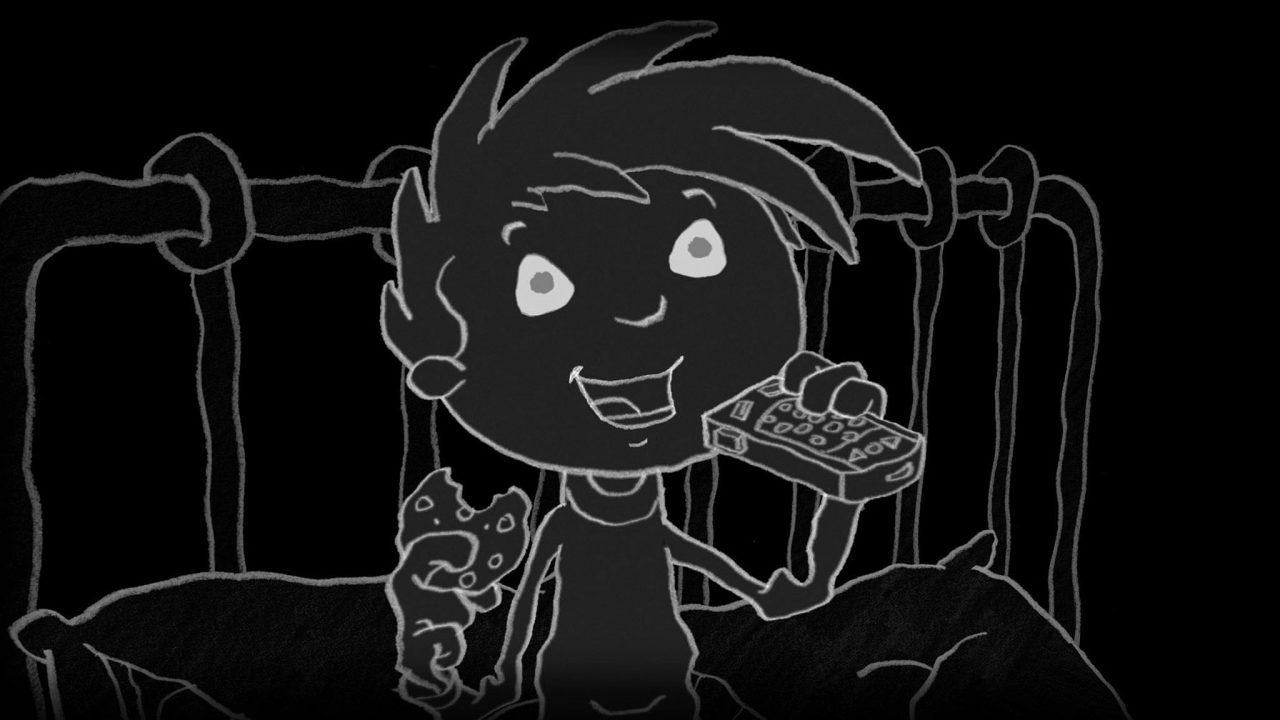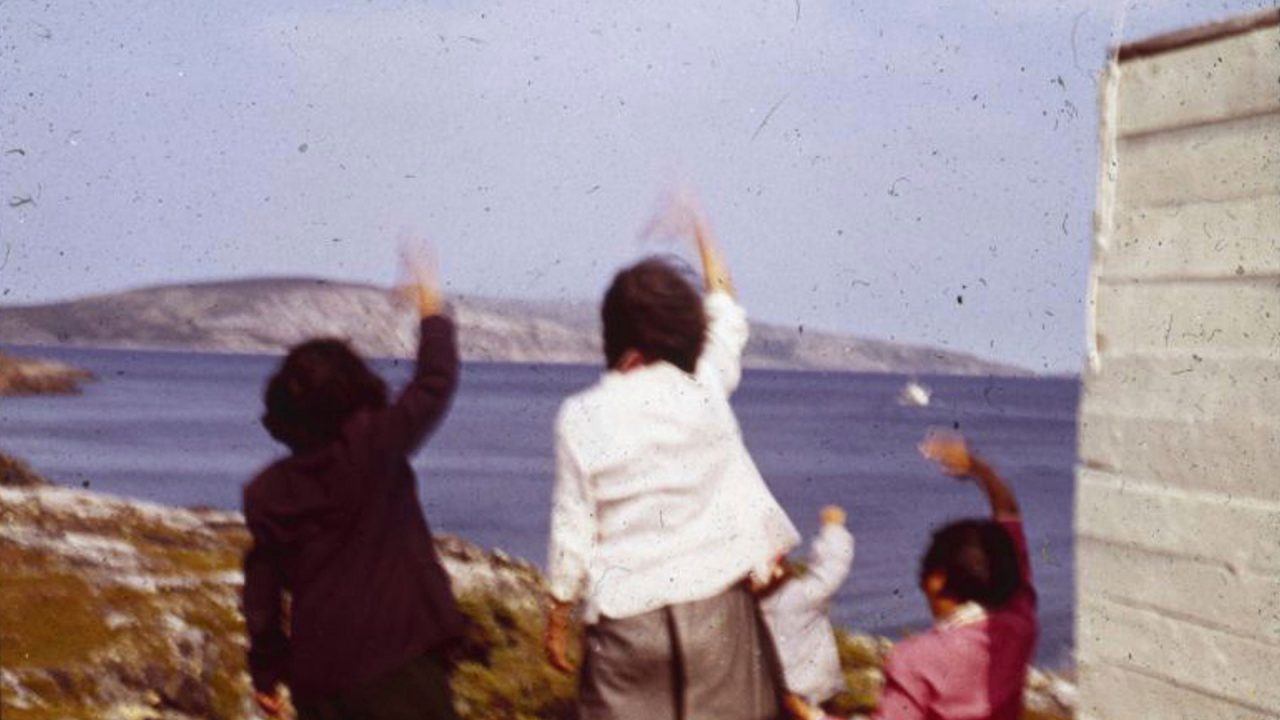
Mini-Lesson for Private Eyes
Mini-Lesson for Private Eyes
Private Eyes: My Mind’s Eyes
Themes: Senses and Independence
Ages: 5–8
Private Eyes, Nicola Lemay, provided by the National Film Board of Canada
Keywords/Topics: Independence, Physical Disabilities, Visual Impairment, Blind, Senses, Braille, Companion Pets, Communication, Confidence, Self-Worth, Challenges, Resourceful
Guiding Question: Why is it important to respect individuality and encourage independence?
Summary: Imagine an Etch-A-Sketch drawing coming to life before your eyes… that’s what it’s like watching Nicola Lemay’s 3D stereoscopic animated film, Private Eyes! Our hero in this mostly black-and-white short is a young boy named Matthew, whose visual impairment is gradually revealed to viewers as his “secret eyes” (i.e., his other senses) are put to the test. This “super-detective” exudes confidence and demonstrates curiosity on his quest to uncover his birthday present. Viewers become immersed in Matthew’s world and find themselves rooting for his success as he surmounts daily challenges that sighted individuals may take for granted.
In the accompanying activities, students will have the opportunity to role play, learn about braille, create maps, and play games, all the while developing a greater understanding and empathy for people with visual impairments and the accommodations that are available to help them navigate the world. Private Eyes is a remarkable film that will leave you with a sense that anything is possible, especially if you have the right attitude!
Activity 1) Why are senses important?
- How do you know that Matthew is blind? List the organs that comprise Matthew’s “secret eyes.” Discuss how his external organs/senses help him to understand his surroundings.
- Role play: In pairs, blindfold one partner and guide them to a designated spot in the classroom/school, then switch roles. In a Sharing or Talking Circle, share your experiences.
- Create a tactile/sensory memory card game using wax string, buttons or any 3D material. Blindfolded, play the game. Discuss any challenges encountered.
- Print out an enlarged black-and-white photo of your favourite physical feature. Write an opinion piece entitled “The Best Part of Me,” describing that feature and why it’s important.
- Examine Canadian paper currency. Where are the braille symbols located? What do the dots represent?
Go Deeper
Read about Louis Braille, the inventor of the braille alphabet, and other influential people like Helen Keller who have made a difference in the world for people with physical disabilities. Choose a person with a disability, create a poster highlighting their individual strengths, and present it to the class.
Activity 2) Why is it important to be aware of your surroundings?
- Discuss the importance of Matthew’s cane.
- List the ways that Matthew’s senses help him walk to school.
- Create a map that best represents how you get from home to school. Include key landmarks, e.g., parks, stores, stop signs etc.
- Survey the number of students who walk to school, take the bus, ride a bike or are dropped off by a family member.
- Matthew calls himself a “super-detective.” Draw a character with superpowers and label or write an explanation about their powers. Present your superhero to the class.
Go Deeper
Watch a video clip depicting the PyeongChang Paralympic Mascot and learn about the different adapted sports in the Olympics. Learn about the Canadian National Institute for the Blind (CNIB) or your local association for the blind. Learn about the different programs, adaptations and support services that are available to blind or partially sighted individuals and their families.
Activity 3) The sensory classroom. Discover a world without sight
- Play the “Guess the Mystery Animal” game. Create a list of clues based on different animals and then attempt to identify those animals.
- Put an object in a closed box. Passing it around, students must use their senses to identify what could be inside.
- Present students with different sounds while their eyes are closed. Students attempt to identify what they hear, e.g., a bird whistle, clapping, cards being shuffled, etc.
- Being cognizant of food allergies, blindfolded students use their senses to taste and smell a variety of foods, e.g., applesauce, cinnamon, sugar, salt, etc.
- Choose an object and write a sensory poem about that object.
Go Deeper
Learn about companion pets and other service animals that support people with physical or emotional difficulties and/or intellectual challenges. Learn about Canadian Guide Dogs for the Blind or about guide/service dogs in your community.
Sandra Fisher has been an elementary ELA/Math teacher since 1997. She is currently teaching Grade 3 at a bilingual International Baccalaureate school and confesses to owning enough picture books and teaching materials to open up a small shop. Her personal motto is: Eat, Teach, Sleep, Repeat! Outside of school, Sandra loves spending time hiking, swimming, playing volleyball, camping and travelling with her family.
Pour lire cet article en français, cliquez ici.
Discover more Mini-Lessons | Watch educational films on NFB Education | Watch educational playlists on NFB Education | Follow NFB Education on Facebook | Follow NFB Education on Pinterest | Subscribe to the NFB Education Newsletter



